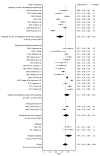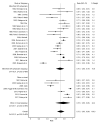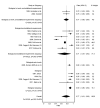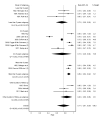Success Rates of Monitoring for Healthcare Professionals with a Substance Use Disorder: A Meta-Analysis
- PMID: 33450803
- PMCID: PMC7828295
- DOI: 10.3390/jcm10020264
Success Rates of Monitoring for Healthcare Professionals with a Substance Use Disorder: A Meta-Analysis
Abstract
In the past decades, monitoring programs have been developed for healthcare professionals with substance use disorders. We aimed to explore estimates of abstinence and work retention rates after participation in such monitoring programs. A literature search was performed using PubMed, Embase, PsycINFO, and CINAHL. Twenty-nine observational studies reporting on success rates (abstinence and work retention) of monitoring for healthcare professionals with a substance use disorder were included in the meta-analysis. Quality-effects models calculated pooled success rates and corresponding 95%-Confidence Intervals (CI), with subgroup analyses on monitoring elements and patient characteristics. Pooled success rates were 72% for abstinence (95%-CI = 63-80%) and 77% for work retention (95%-CI = 61-90%). Heterogeneity across studies was partly explained by the starting moment of monitoring, showing higher abstinence rates for studies that started monitoring after treatment completion (79%; 95%-CI = 72-85%) compared to studies that started monitoring with treatment initiation (61%; 95%-CI = 50-72%). About three-quarters of healthcare professionals with substance use disorders participating in monitoring programs are abstinent during follow-up and working at the end of the follow-up period. Due to selection and publication bias, no firm conclusions can be drawn about the effectiveness of monitoring for healthcare professionals with SUD.
Keywords: abstinence; healthcare professional; meta-analysis; monitoring; substance use disorder; work retention.
Conflict of interest statement
The authors declare no conflict of interest.
Figures















References
-
- Hughes P.H., Storr C., Baldwin D.C., Williams K.M., Conard S., Sheehan D. Patterns of substance use in the medical profession. Med. J. 1992;41:311–314. - PubMed
Publication types
Grants and funding
LinkOut - more resources
Full Text Sources
Other Literature Sources
Miscellaneous

